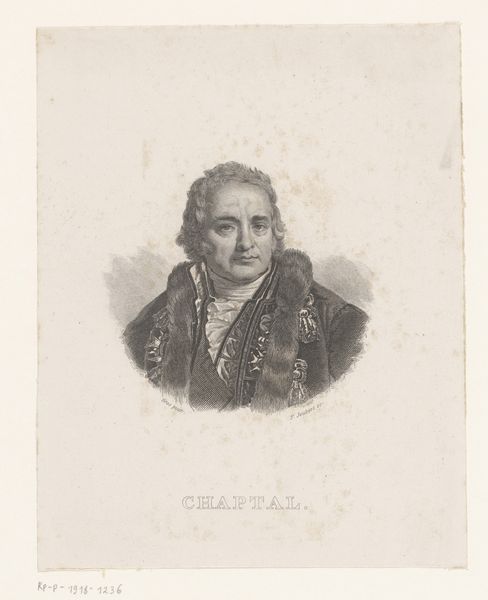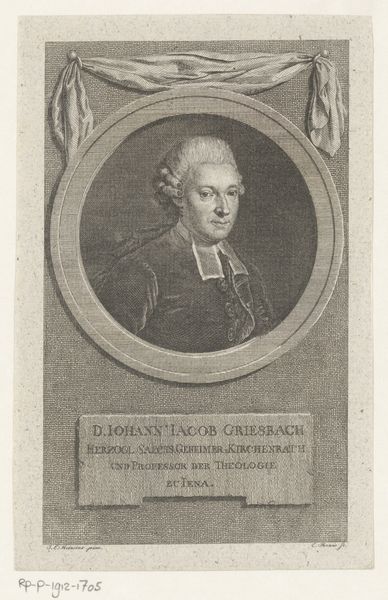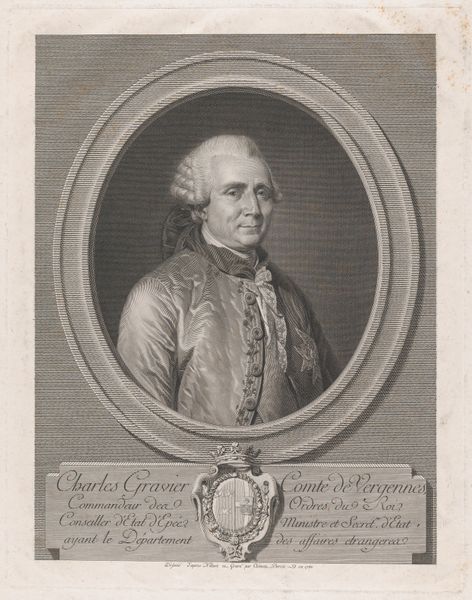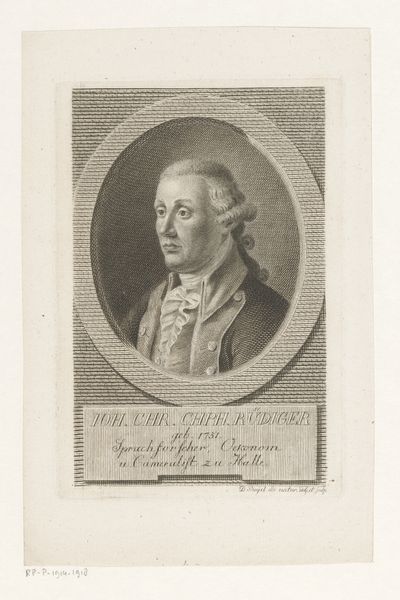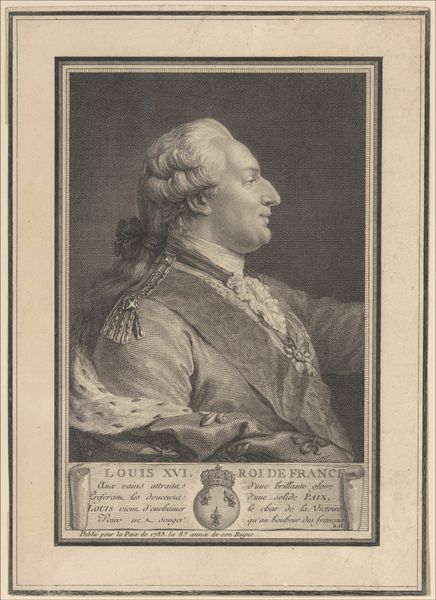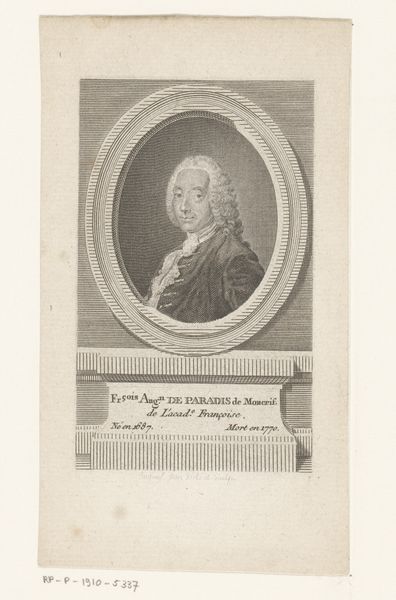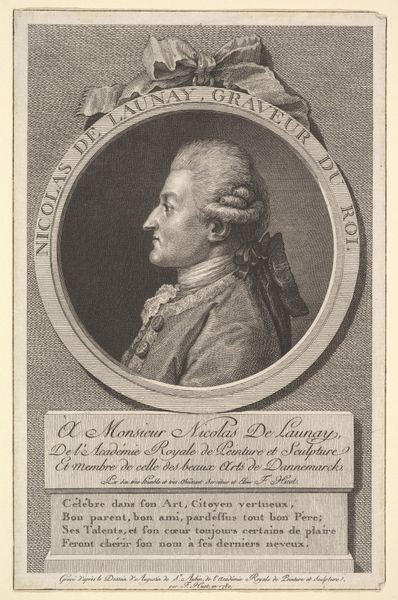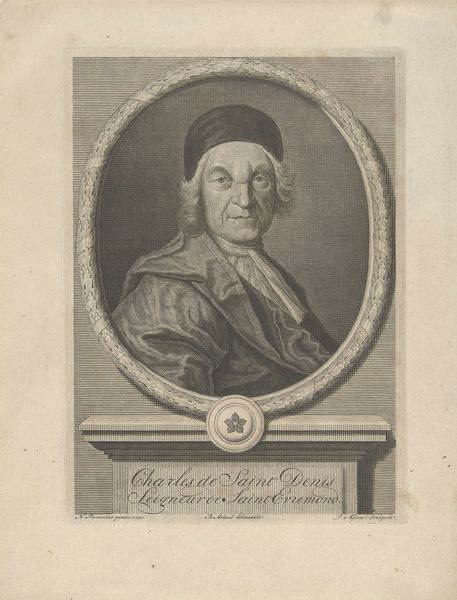
Dimensions: sheet (trimmed to plate mark): 20.5 x 15 cm (8 1/16 x 5 7/8 in.)
Copyright: National Gallery of Art: CC0 1.0
Curator: The delicacy of the lines! It’s an engraving by Augustin de Saint-Aubin, a portrait of Charles Henri de Heineken, dating back to around 1770. Look at the textures created solely with etched lines. Editor: Yes, there’s something deeply…authoritative about it, isn’t there? The very defined profile. The bow on top almost feels like it’s there to signify hierarchy. I wonder what role he played. Curator: Charles Henri was, shall we say, a man of letters, and also an imperial knight as denoted in the script below the oval frame of the print. But note also the labor behind creating this: the artist as artisan, translating a likeness through painstaking technique for mass distribution. Editor: Absolutely, and given the period, that mass distribution itself would be part of this system of privilege. Who would see this, and where? We’re not just looking at an individual; we’re engaging with power structures. The image actively communicates class. The ornate hat, fur coat... it's a visual language speaking of status. How this portrait cements their reputation in broader societal systems. Curator: Precisely, an advertisement for the elite, engraved with incredible skill to further impress the viewer. Observe the rendering of the fur; the hat—all of it is an example of how printed material perpetuated notions of importance, not only through patronage, but by the very physicality of reproducing this image. Editor: And consider Saint-Aubin’s position in relation to that power. An artisan himself, embedded within a system dependent on the reproduction of images of authority and luxury. To me this work sits at an intersection of labour, societal image building, and a very intentional distribution of propaganda that maintains its presence and value to this day. Curator: Yes, and its materiality—the ink, the paper—become inseparable from its message. Even now it tells us something about artistic labor during the Baroque period, in addition to perpetuating the sitter’s perceived station. Editor: It brings to life the complexities of that period through image making that at first glance may be a simple aristocratic depiction. What roles the individual and labour played as an extension of hierarchy within art and society. Curator: An artwork for many to engage with then through all these avenues. Editor: Yes, indeed, I’ve enjoyed peeling back those layers.
Comments
No comments
Be the first to comment and join the conversation on the ultimate creative platform.

